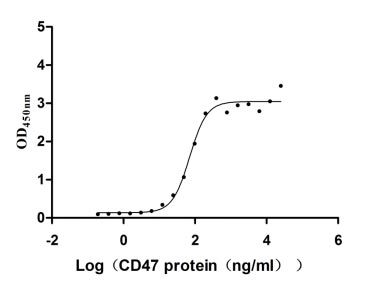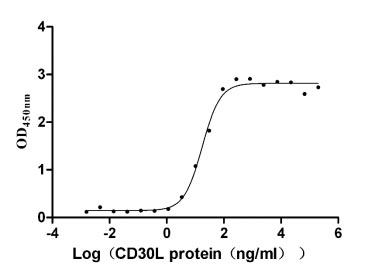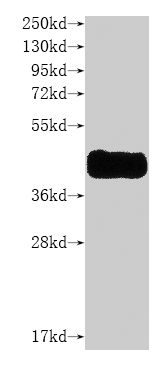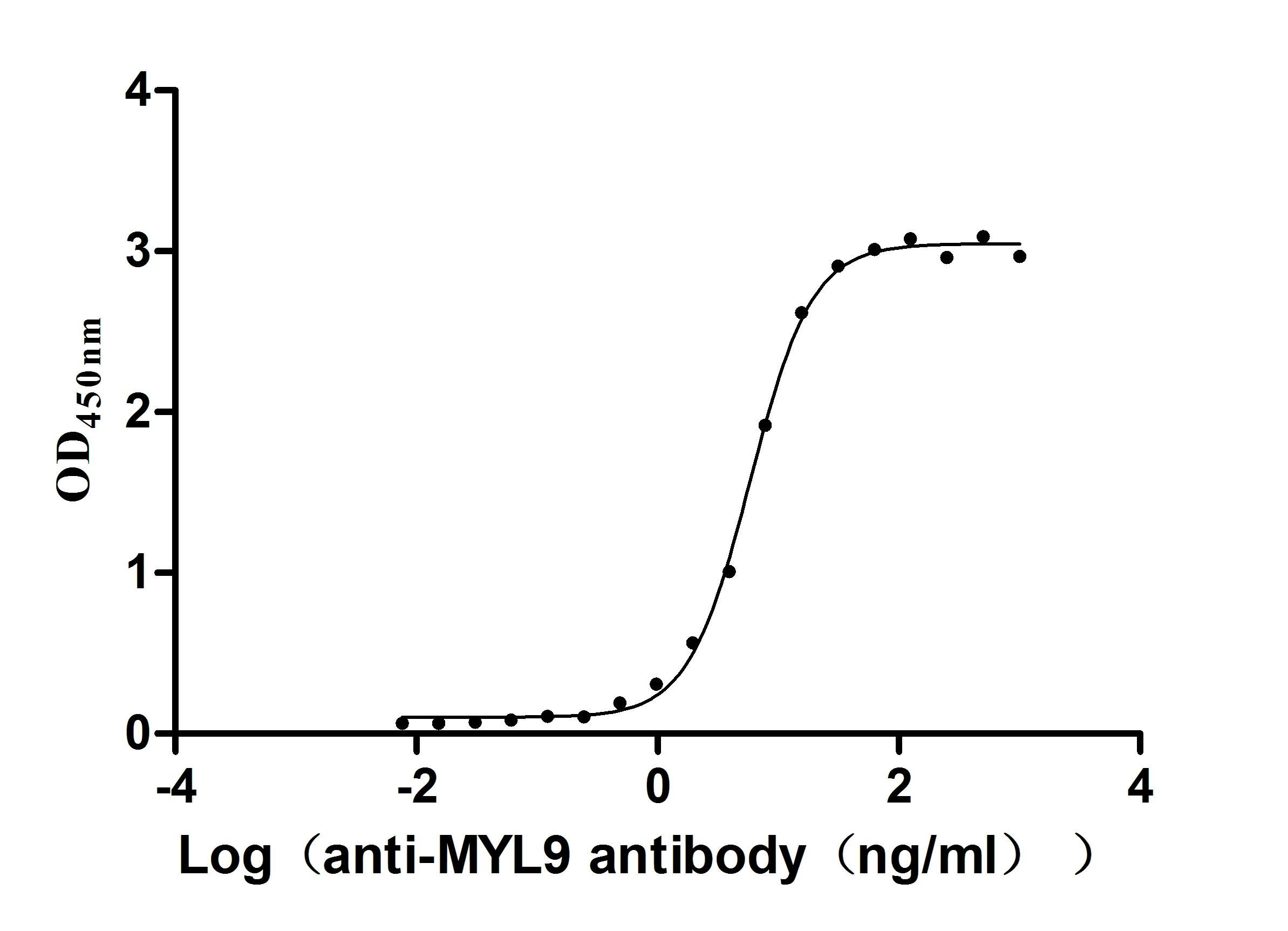Recombinant Human Carotenoid-cleaving dioxygenase, mitochondrial (BCO2)
-
中文名稱:Recombinant Human Carotenoid-cleaving dioxygenase, mitochondrial(BCO2)
-
貨號(hào):CSB-YP874848HU
-
規(guī)格:
-
來(lái)源:Yeast
-
其他:
-
中文名稱:Recombinant Human Carotenoid-cleaving dioxygenase, mitochondrial(BCO2)
-
貨號(hào):CSB-EP874848HU
-
規(guī)格:
-
來(lái)源:E.coli
-
其他:
-
中文名稱:Recombinant Human Carotenoid-cleaving dioxygenase, mitochondrial(BCO2)
-
貨號(hào):CSB-EP874848HU-B
-
規(guī)格:
-
來(lái)源:E.coli
-
共軛:Avi-tag Biotinylated
E. coli biotin ligase (BirA) is highly specific in covalently attaching biotin to the 15 amino acid AviTag peptide. This recombinant protein was biotinylated in vivo by AviTag-BirA technology, which method is BriA catalyzes amide linkage between the biotin and the specific lysine of the AviTag.
-
其他:
-
中文名稱:Recombinant Human Carotenoid-cleaving dioxygenase, mitochondrial(BCO2)
-
貨號(hào):CSB-BP874848HU
-
規(guī)格:
-
來(lái)源:Baculovirus
-
其他:
-
中文名稱:Recombinant Human Carotenoid-cleaving dioxygenase, mitochondrial(BCO2)
-
貨號(hào):CSB-MP874848HU
-
規(guī)格:
-
來(lái)源:Mammalian cell
-
其他:
產(chǎn)品詳情
-
純度:>85% (SDS-PAGE)
-
基因名:BCO2
-
Uniprot No.:
-
別名:B-diox-II; BCDO2_HUMAN; Bco2; Beta,beta-carotene 9',10'-oxygenase; Beta-carotene dioxygenase 2
-
種屬:Homo sapiens (Human)
-
蛋白長(zhǎng)度:full length protein
-
表達(dá)區(qū)域:1-579
-
氨基酸序列MFFRVFLHFI RSHSATAVDF LPVMVHRLPV FKRYMGNTPQ KKAVFGQCRG LPCVAPLLTT VEEAPRGISA RVWGHFPKWL NGSLLRIGPG KFEFGKDKYN HWFDGMALLH QFRMAKGTVT YRSKFLQSDT YKANSAKNRI VISEFGTLAL PDPCKNVFER FMSRFELPGK AAAMTDNTNV NYVRYKGDYY LCTETNFMNK VDIETLEKTE KVDWSKFIAV NGATAHPHYD LDGTAYNMGN SFGPYGFSYK VIRVPPEKVD LGETIHGVQV ICSIASTEKG KPSYYHSFGM TRNYIIFIEQ PLKMNLWKIA TSKIRGKAFS DGISWEPQCN TRFHVVEKRT GQLLPGRYYS KPFVTFHQIN AFEDQGCVII DLCCQDNGRT LEVYQLQNLR KAGEGLDQVH NSAAKSFPRR FVLPLNVSLN APEGDNLSPL SYTSASAVKQ ADGTIWCSHE NLHQEDLEKE GGIEFPQIYY DRFSGKKYHF FYGCGFRHLV GDSLIKVDVV NKTLKVWRED GFYPSEPVFV PAPGTNEEDG GVILSVVITP NQNESNFILV LDAKNFEELG RAEVPVQMPY GFHGTFIPI
-
蛋白標(biāo)簽:Tag?type?will?be?determined?during?the?manufacturing?process.
The tag type will be determined during production process. If you have specified tag type, please tell us and we will develop the specified tag preferentially. -
產(chǎn)品提供形式:Lyophilized powder
Note: We will preferentially ship the format that we have in stock, however, if you have any special requirement for the format, please remark your requirement when placing the order, we will prepare according to your demand. -
復(fù)溶:We recommend that this vial be briefly centrifuged prior to opening to bring the contents to the bottom. Please reconstitute protein in deionized sterile water to a concentration of 0.1-1.0 mg/mL.We recommend to add 5-50% of glycerol (final concentration) and aliquot for long-term storage at -20℃/-80℃. Our default final concentration of glycerol is 50%. Customers could use it as reference.
-
儲(chǔ)存條件:Store at -20°C/-80°C upon receipt, aliquoting is necessary for mutiple use. Avoid repeated freeze-thaw cycles.
-
保質(zhì)期:The shelf life is related to many factors, storage state, buffer ingredients, storage temperature and the stability of the protein itself.
Generally, the shelf life of liquid form is 6 months at -20°C/-80°C. The shelf life of lyophilized form is 12 months at -20°C/-80°C. -
貨期:Delivery time may differ from different purchasing way or location, please kindly consult your local distributors for specific delivery time.Note: All of our proteins are default shipped with normal blue ice packs, if you request to ship with dry ice, please communicate with us in advance and extra fees will be charged.
-
注意事項(xiàng):Repeated freezing and thawing is not recommended. Store working aliquots at 4°C for up to one week.
-
Datasheet :Please contact us to get it.
靶點(diǎn)詳情
-
功能:Asymmetrically cleaves beta-carotene at the 9',10' double bond resulting in the formation of beta-apo-10'-carotenal and beta-ionone. Besides beta-carotene, lycopene is also oxidatively cleaved. The apocarotenals formed by this enzyme may be the precursors for the biosynthesis of retinoic acid or exert unknown physiological effects.
-
基因功能參考文獻(xiàn):
- Study identifies BCO2 as a tumor suppressor in prostate cancer which mediates inhibition of NF-kB signaling. Its expression is decreased in human prostate cancer. PMID: 27406826
- review of molecular aspects in carotenoid metabolism and diseases PMID: 27390265
- Role of beta-Carotene 9,10-Dioxygenase in Macular Pigment Metabolism PMID: 26307071
- Inactivity of human beta,beta-carotene-9',10'-dioxygenase (BCO2) underlies retinal accumulation of the human macular carotenoid pigment. PMID: 24982131
- The gene encoding beta-carotene-9',10'-oxygenase, which cleaves the 9',10' double bond in beta-carotene into beta-apo-10'-carotenal, was cloned and expressed in Escherichia coli. PMID: 21302131
- we found that the third family member, beta,beta-carotene-9',10'-oxygenase (BCDO2), is a mitochondrial carotenoid-oxygenase with broad substrate specificity PMID: 21106934
顯示更多
收起更多
-
亞細(xì)胞定位:Mitochondrion.
-
蛋白家族:Carotenoid oxygenase family
-
組織特異性:Highly expressed in retinal pigment epithelium. Also expressed in stomach, small intestine, liver, testis, kidney, adrenal gland, pancreas, heart, skeletal muscle and prostate (at protein level).
-
數(shù)據(jù)庫(kù)鏈接:
Most popular with customers
-
Express system: Mammalian cell
Species: Homo sapiens (Human)
-
Recombinant Human Tumor necrosis factor receptor superfamily member 8 (TNFRSF8), partial (Active)
Express system: Mammalian cell
Species: Homo sapiens (Human)
-
Recombinant Mouse Retinol-binding protein 4 (Rbp4) (Active)
Express system: Mammalian cell
Species: Mus musculus (Mouse)
-
Recombinant Human C-C chemokine receptor type 8 (CCR8)-VLPs (Active)
Express system: Mammalian cell
Species: Homo sapiens (Human)
-
Recombinant Human Carcinoembryonic antigen-related cell adhesion molecule 8(CEACAM8) (Active)
Express system: Mammalian cell
Species: Homo sapiens (Human)
-
Recombinant Human Myosin regulatory light chain 12A (MYL12A) (Active)
Express system: E.coli
Species: Homo sapiens (Human)
-
Recombinant Human Cadherin-1(CDH1),partial (Active)
Express system: Mammalian cell
Species: Homo sapiens (Human)


















